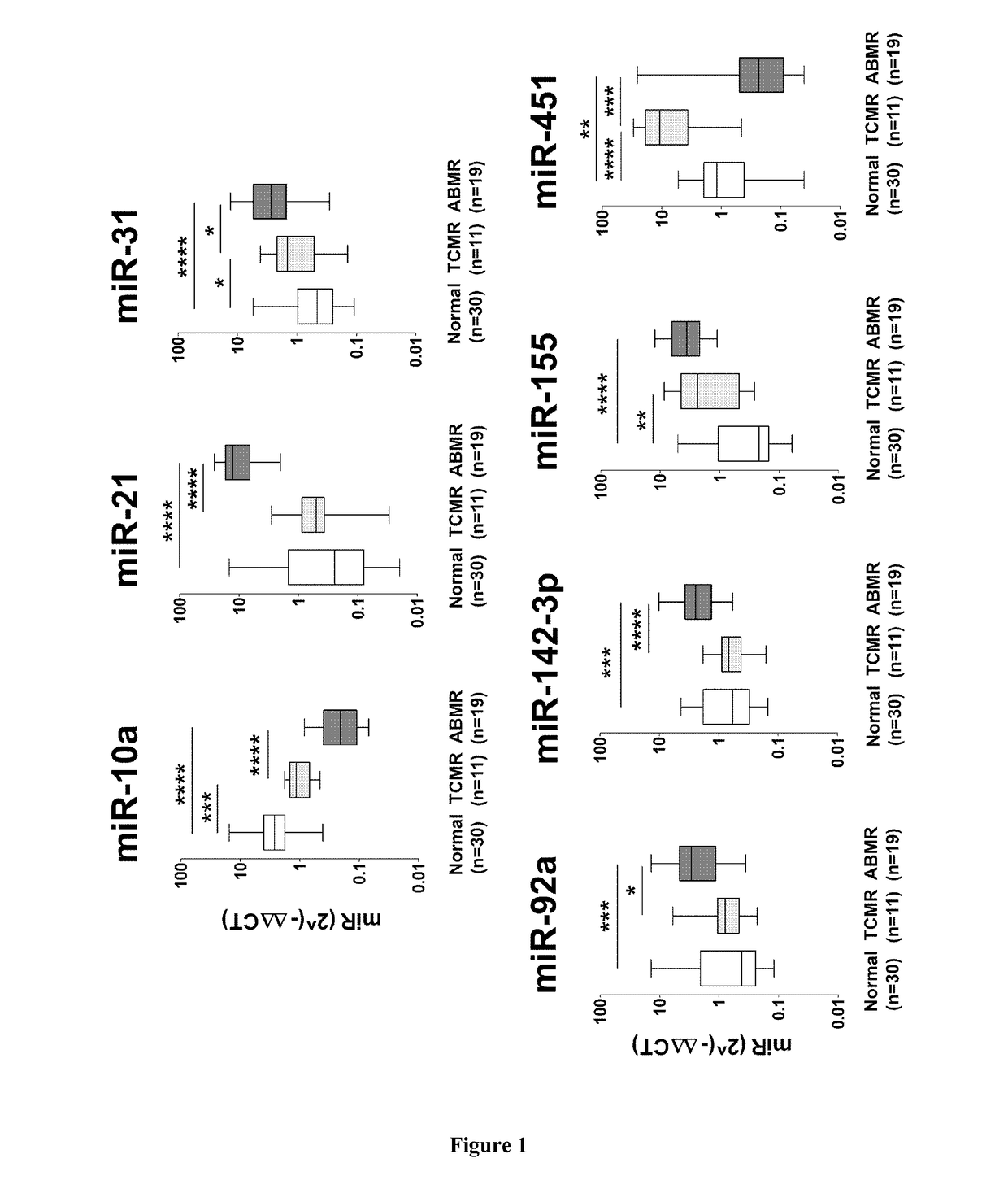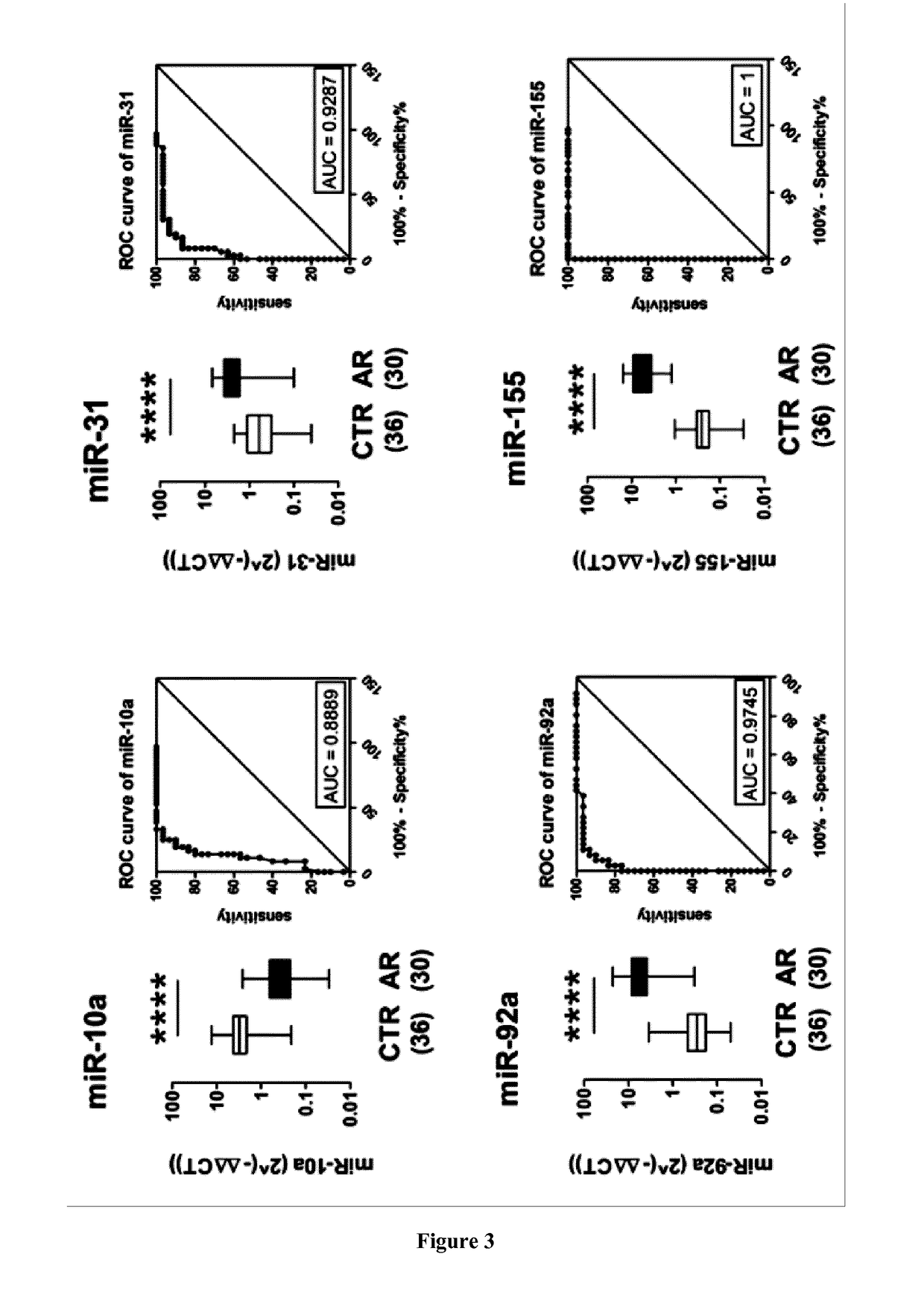Methods for predicting acute rejection in heart recipients
- Summary
- Abstract
- Description
- Claims
- Application Information
AI Technical Summary
Benefits of technology
Problems solved by technology
Method used
Image
Examples
example
Methods
[0041]This study enrolled 60 heart recipients; A Control group (n=30) included biopsies / serum without rejection; Rejection group (n=30) included 11 biopsies / serum with acute cellular rejection (ACR) and 17 with antibody-mediated rejection (AMR). DSA was also assessed using Luminex single antigen assay.
[0042]Fourteen miRNAs were chosen from an in silico analysis conjugating bibliography analysis and databases screening (TargetScan, MiRBase). The expression of these miRNAs was studied by qPCR analysis on frozen EMB and in recipient sera.
Results
[0043]Seven miRNAs showed a significantly different tissue expression during rejection (p0.001): inflammatory miR-155, 142-3p and 451, endothelial miR-10a and 92a, cardiac miR-21 and 31. All of these 7 miRNAs discriminated AMR from controls (p<0.01) while miR-155, miR-451, miR-10a, and miR-31 differentiated ACR from controls (p=0.03). Three miRNAs (miR-451, miR-10a, and miR-21) were able to discriminate ACR and AMR (p≦0.005).
[0044]We then...
PUM
| Property | Measurement | Unit |
|---|---|---|
| Level | aaaaa | aaaaa |
Abstract
Description
Claims
Application Information
 Login to View More
Login to View More - R&D Engineer
- R&D Manager
- IP Professional
- Industry Leading Data Capabilities
- Powerful AI technology
- Patent DNA Extraction
Browse by: Latest US Patents, China's latest patents, Technical Efficacy Thesaurus, Application Domain, Technology Topic, Popular Technical Reports.
© 2024 PatSnap. All rights reserved.Legal|Privacy policy|Modern Slavery Act Transparency Statement|Sitemap|About US| Contact US: help@patsnap.com










